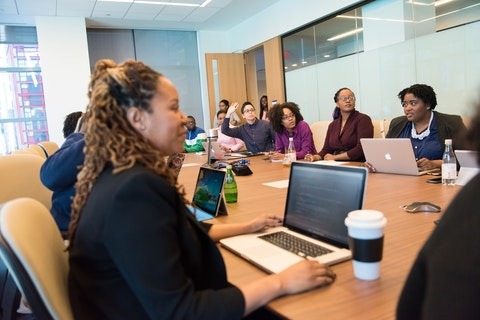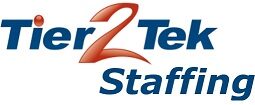Let’s be honest: we know about staffing. As an employment agency, we’ve dealt with the concept and process of delivering new teams to plenty of businesses. It’s kind of what we do (duh). But, working with a staffing company is not always a priority. Sometimes there can be unseen growth waiting around the corner. In a blink, you could find yourself brutally understaffed. That’s the fun of running a business, after all. Luckily, there are solid ways to plan for the future of your workforce. Implementing hiring dynamics can increase the effectiveness of your employment process, allowing you to bring in new and prestigious employees with efficiency.
Unplanned growth may lead to miscommunication, chaos and a shaky bottom line. One effective way to avoid these problems is to plan your growth as you start to establish your business, especially before you hire new employees. Your business goals, the integrity of your company culture and your success depend on hiring the right employees who can both grow with the company and facilitate the company’s growth.
All of this may seem like an obscure concept. When you start a company or experience successful growth, you need to bring on a staff of fantastic employees. While the process may seem simple in hypotheticals, it’s anything but. Hiring the best employees is not as easy as interviewing applicants. Like any business-related task, plans can be put into place to make the process more proficient. Henceforth, these are your hiring dynamics.
- 1. Use Organization Charts to Plan for the Future
- 2. Generate a Strategic Hiring Plan to Prepare for the Future
- 3. Write a Dynamic Job Description to Attract Professional Applicants
- 4. Use a Personality Test to Filter Applicants
- 5. Keep Track of Training to Prevent Stagnanting Growth
- Working With a Staffing Agency
1. Use Organization Charts to Plan for the Future

If you tend to stray away from organizational strategies like charts and graphs, you are probably going to shudder at this idea.
Let’s be honest. Keeping written plans and charts can be an arduous and paradoxical task. You are keeping a chart organized to help keep something else organized. Either way, organization is needed. If you find yourself straying away from filling out charts and calendars due to structure-based anxiety, then you may find running a business difficult.
Keeping a written plan is necessary for success. In fact, writing down your goals makes you 1.4 times more likely to succeed. Boom. Proven fact.
Consequently, it can be extremely helpful to keep a record and plan of your employment process. Keep a document that lists all the positions, role hierarchy and other tasks. Also, you can keep a record of each employee, generating a possibility for future growth or promotions.
Overall, this information allows you to keep track of who is doing what and can help you morph positions going forward. You may find that a particular position should be combined with another or that an employee should have more (or fewer) tasks. Furthermore, having an organizational chart allows you to improve communication and flow amongst positions. Who reports to who? Who is responsible for this task?
Organization charts are hiring dynamics closely associated with the Human Resources department. But, if your company is not to the point of having one established, you need to keep track of these things yourself.
Basically, charts are good. Have charts for everything. Being organized is always positive.
2. Generate a Strategic Hiring Plan to Prepare for the Future

After an organization chart has been generated, you’re ready to create a strategic hiring plan. You know who you need and what their responsibilities will be. Bear in mind that a hiring plan involves more than just checklists and numbers. Sure, mathematically you can afford to bring on X amount of employees, but do these positions fit into your future growth? Will you end up overstaffed with positions that aren’t necessary for your growth as a company?
A hiring plan must make business executives think about their long-term objectives. Looking forward is always crucial, even if your business is just starting. There’s always room for positivity, and when you are planning the future of your workforce, you should be prepared for the best company outcomes.
Here are some questions to ask when instilling new hiring dynamics:
- What talent needs to be hired over the next few years?
- What teams need to be filled or which positions need to be created?
- How do our company’s goals match our hiring pace?
- If success continues, what new positions may be needed?
While this may all seem like unfounded optimism, a company should always be prepared for the future. Ultimately, having these ideas in place can help you with current recruiting.
For example: if you know that you will need a specific department manager when your company succeeds, then when you are hiring for the current position, you know what attributes to look for in potential employees. You know you’ll need a manager in the future, so you should bring on candidates that have managerial strengths. When the time comes to draft a bigger team, you will already have employees on staff that are ready to step up to the position.
It’s important to always hire ahead. You should never bring in employees you can’t envision taking higher steps once success comes. With a hiring plan, you know exactly what to look for in roles and qualifications.
3. Write a Dynamic Job Description to Attract Professional Applicants

Writing a convincing job description can make or mar your efforts towards building a team. It may seem as if candidates will rush toward any job posting, but that’s far from the truth. We live in the time of the Great Resignation. After the traumatic pandemic swept the nation for over a year, workers have realized a new sense of self-worth. No longer are employees taking positions for the sake of employment. Workers understand their value and want the correct reciprocation (as they should).
With that being said, creating a compelling and forthright job posting is critical in finding fantastic candidates. It may seem like a simple task, but crafting job descriptions is one of the most important hiring dynamics.
Your job posting should stand out, just like applicant resumes. There becomes a fine line to toe. You don’t want to overstate the position as if it’s something it’s not, but you want to make it enticing for workers. The key here is to create a description that looks for more generative skills like problem-solving, critical thinking, creativity and teamwork. Avoid static, run-of-the-mill skills. You want to express that the job takes more than just mindless effort. No one wants to work as a cog in a machine.
Growth Is Key
Furthermore, it’s impractical to state the promotional outline in the job description, but your post should note that growth is possible. Great candidates want to work for a company that doesn’t hold a ceiling above them. They want to be able to grow. Stating that this is possible within the position is a great way to get attention.
Giving a brief description of company culture can also help boost your job above others. A 2019 study by GlassDoor found that 77% of workers consider a company’s culture before applying. Establishing a culture is key to bringing in fantastic workers.
4. Use a Personality Test to Filter Applicants

As our former tips have instilled, knowing what you are looking for in an employee is the first step in hiring dynamics. If you don’t know exactly what type of worker you are looking for, then how do you expect to find one?
It’s that simple.
It may seem like a strange tip, but introducing a personality test into your job application may allow you to filter out applicants that fit in line with your company culture, positions and ideals. Furthermore, if a candidate strays completely off the mark you are looking for, you can eliminate them from the vetting process. There is no need to waste time interviewing someone with the perfect resume only to find out they don’t fit the aspects you are looking for.
Personality tests measure how a candidate’s personality traits correlate to job performance, crisis, communication and other managerial situations. Even if the position is not responsible for leading, you still want to hire leaders (remember to look ahead). Luckily, job boards like Indeed have personality tests already prepared. You can attach these requirements to your applications (along with other tests). Candidates will be required to fill out the test to complete the application.
Using this test during the hiring process allows you to look for attitudes that will support the value and goals of your company. Save yourself some time in the hiring process, especially if you are handling your human resources. Time is money, after all.
5. Keep Track of Training to Prevent Stagnanting Growth

The hiring process is not over once the employee signs the onboarding documents. You have spent a lot of time and resources to find the right person and you want to ensure that both of your expectations are met. You need to ensure that your new employee is getting the appropriate training and certifications.
Too often the hiring process stops when the dotted lines are filled. Sure, you may have hired an employee that has a plethora of explicable experience, but that does not mean they are ready to immediately step into the role. Not only can launching an employee into their role cause them to be soured on the job, but it can affect your workplace.
Ultimately, you don’t want a new employee to feel overwhelmed. This sudden shift may cause them to draw negative emotions toward the job. Furthermore, it may cause them to implement and solidify a way of doing things that don’t align with what you initially planned. When that new hire becomes a permanent worker and you bring on newer hires, the veteran worker may instill those same concepts. Now you have a pipeline of procedures or thought processes that were never intended.
Example
Let’s say you hire a customer service employee. You do not give them the full attention they need during the training process. This worker starts handling troubleshooting with a process you never intended. It may not be wrong, but it isn’t what you planned. Without the proper training, you never catch on to this straying from the path. Eventually, this worker becomes a manager. Now, they are teaching new employees a way of handling a situation that was never supposed to be implemented. This mistake now runs deep.
Training is just as important in hiring dynamics as every step that precedes it.
Working With a Staffing Agency
We’d be foolish not to mention the option of using an employment agency.
Of course, there may be a scenario where you cannot keep up with your company’s growth. It’s possible and it’s common. There is nothing wrong with asking for help.
Luckily, companies like Tier2Tek Staffing know the ins and outs of hiring a great team. We broke down the benefits of working with a staffing agency here.
If you need help bringing in a stellar team, reach out to an employment company. Not only can they bring you great candidates, but they can save you resources. As we said (and many have said before), time is money!

